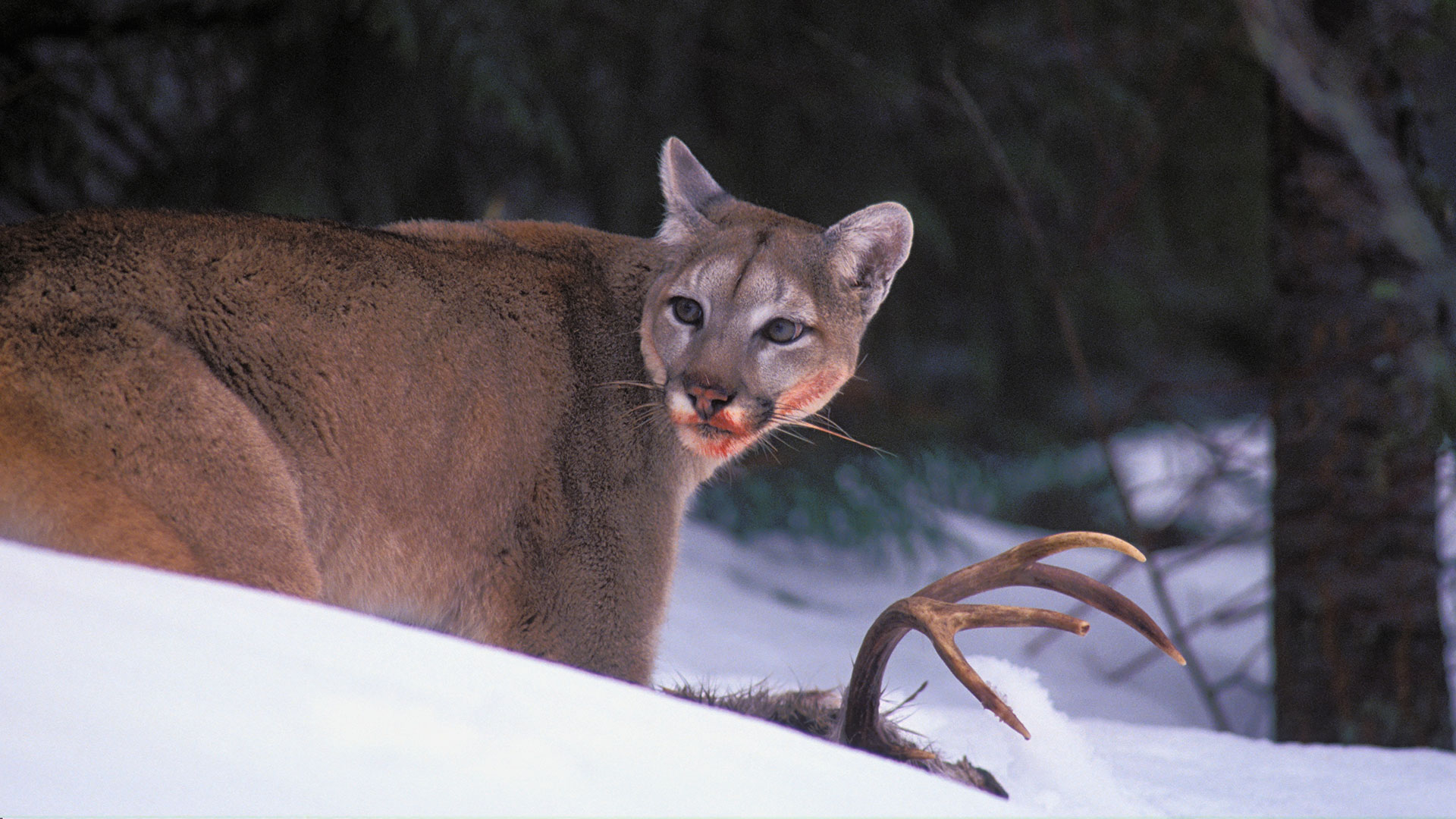

It’s a horror I’m familiar with, having spent a few summers in Wisconsin’s North Woods. As in a campy B-movie, the evening starts well. Following burgers at a local diner, the group piles into a station wagon—the 1976 Ford LTD Country Squire—to return to camp, heads bopping to the blandly cheery Eagles hit, “Take It Easy.” The cabin’s filled with chuckles and good vibes.
Suddenly, at the side of the road, a cluster of strange shapes rush the roadway; there’s screaming, swerving, a dull thud. The shrieks quiet, and the engine dies—a fine smear of deer flesh now adorns the grill of the vintage Ford.
Last year in Wisconsin, 1-in-78 drivers hit deer. Bambi’s no villain, but his white-tailed friends can be deadly.
In fact, every year in the United States, deer cause over 1 million accidents and 200 deaths. How to keep what’s become a dangerous deer population in check? According to the New York Times, a group of scientists and ecologists are arguing that the reintroduction of cougars—the powerful, near-mythical American cat—could curtail the country’s deer numbers and prevent 155 human deaths and 21,400 injuries over thirty years. In terms of medical, liability and repair costs, a healthy cougar population could save $2.3 billion in accident-related costs over the same term. Those numbers were calculated that, over an average six-year lifespan, a cougar kills about 259 deer. Courteney Cox, to our knowledge, has yet to dispatch a single fawn.
In their study, the scientists considered 19 states that both comprised the cougar’s original, pre-1900 habitat and retained enough open woods to support a contemporary cat population. The states that are being considered for cougar reintroduction range from Maine to Wisconsin; states like Illinois and Maryland, though they historically supported cougars, no longer provide enough wooded land. A wild cougar population needs approximately 850 square miles of forestland to thrive.
So, let’s start air-dropping giant kitties, right? Well, planting hoards of hundred-pound carnivores across some of the country’s more-populous states comes with concerns, rational or otherwise. Healthy, 1,000-animal populations in New York and Wisconsin would cost $2.35 million in livestock losses. Moreover, while cougars rarely attack humans; scientists estimated the plan, over thirty years, could result in 30 human deaths. The idea of being mauled by a giant cat—as opposed to a violent-but-banal death by deer-through-windshield—rightly frightens people. Even if, as the New York Times points out, a healthy cougar population would save five times as many human lives as it cost, it’s not an easy political sell. People fear teeth and claws, even if antlers and hooves are what will, statistically, get ‘em in the end.
Let’s work on tempering our emotional response to predators. With cougars back in American woods, more motorists might be able to make it through The Eagles’ “Greatest Hits” without guts—deer or human—on the dashboard.